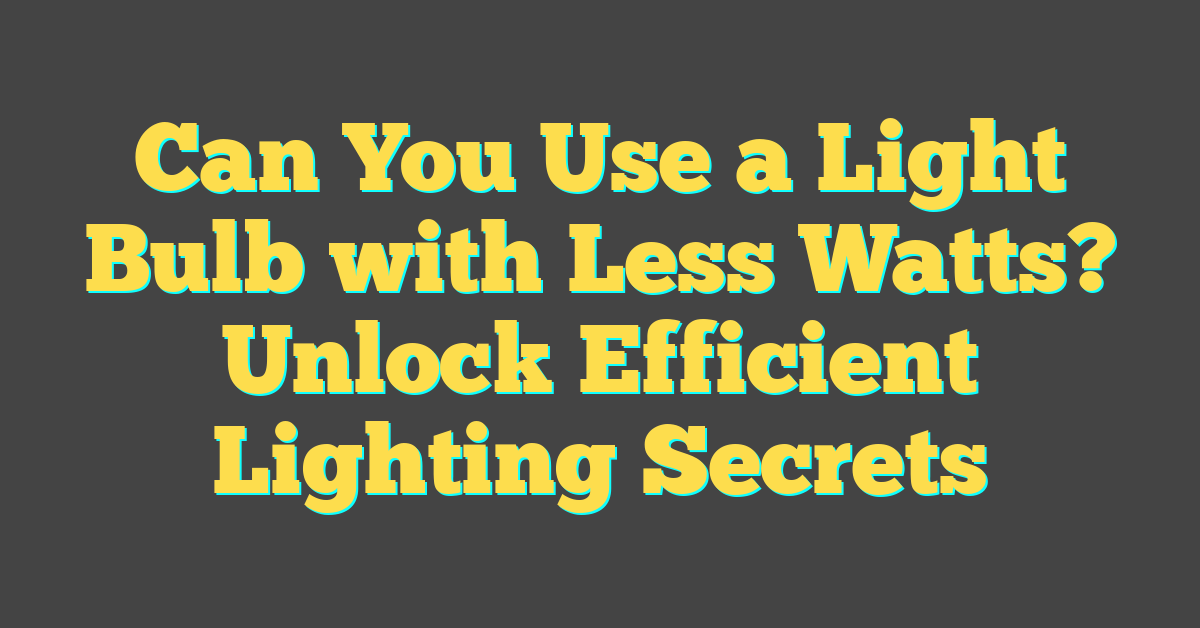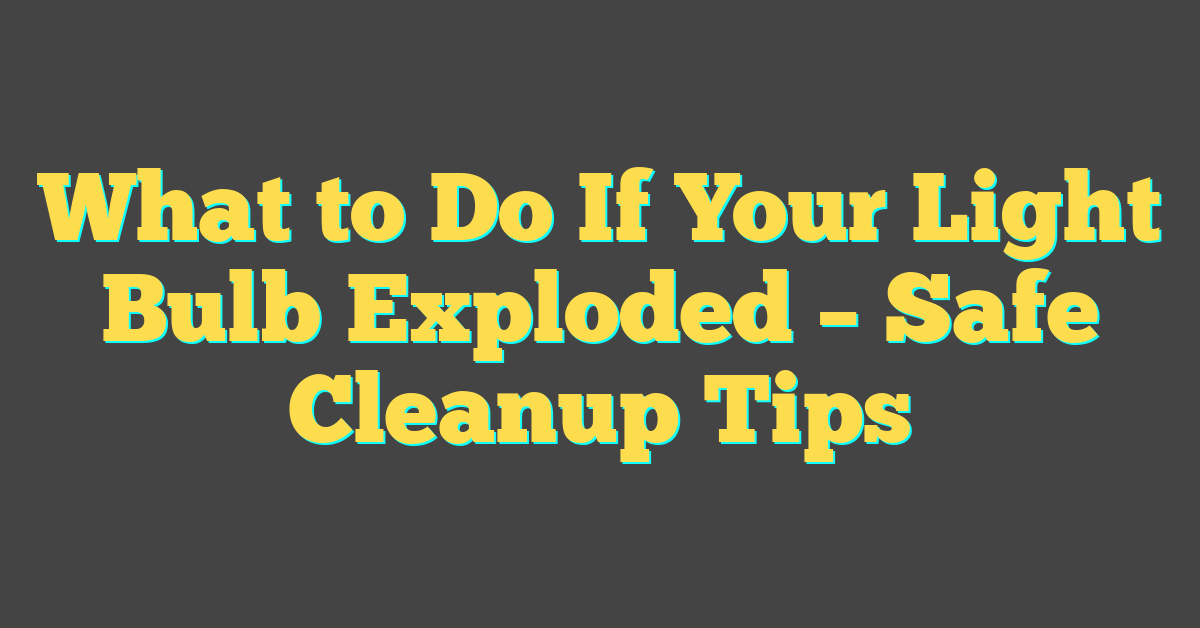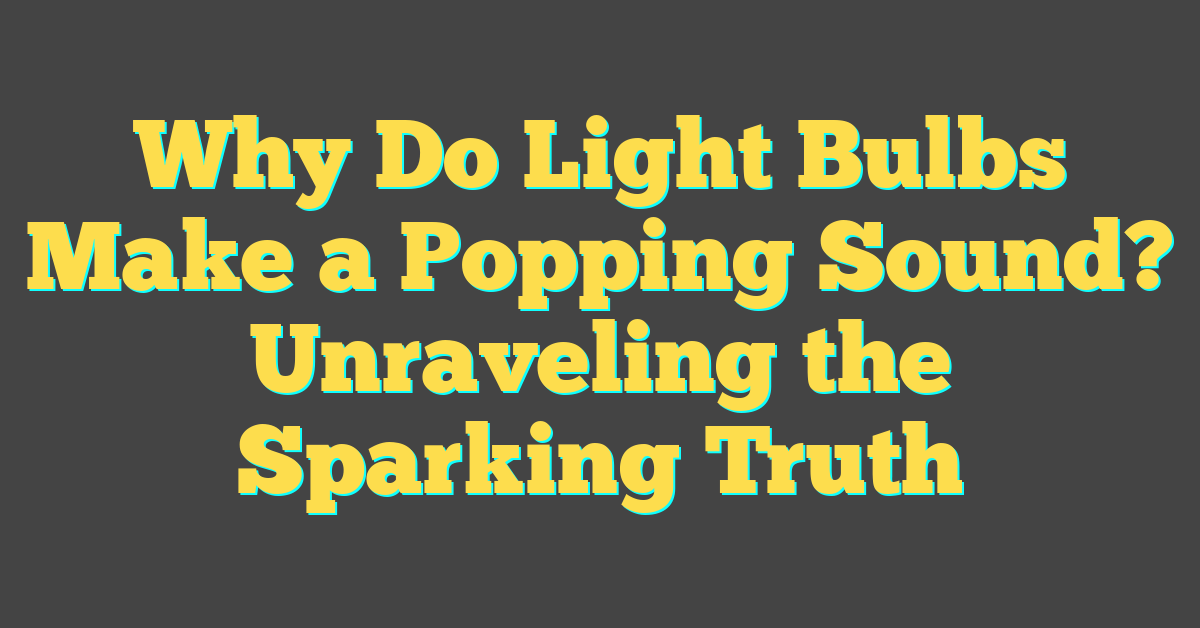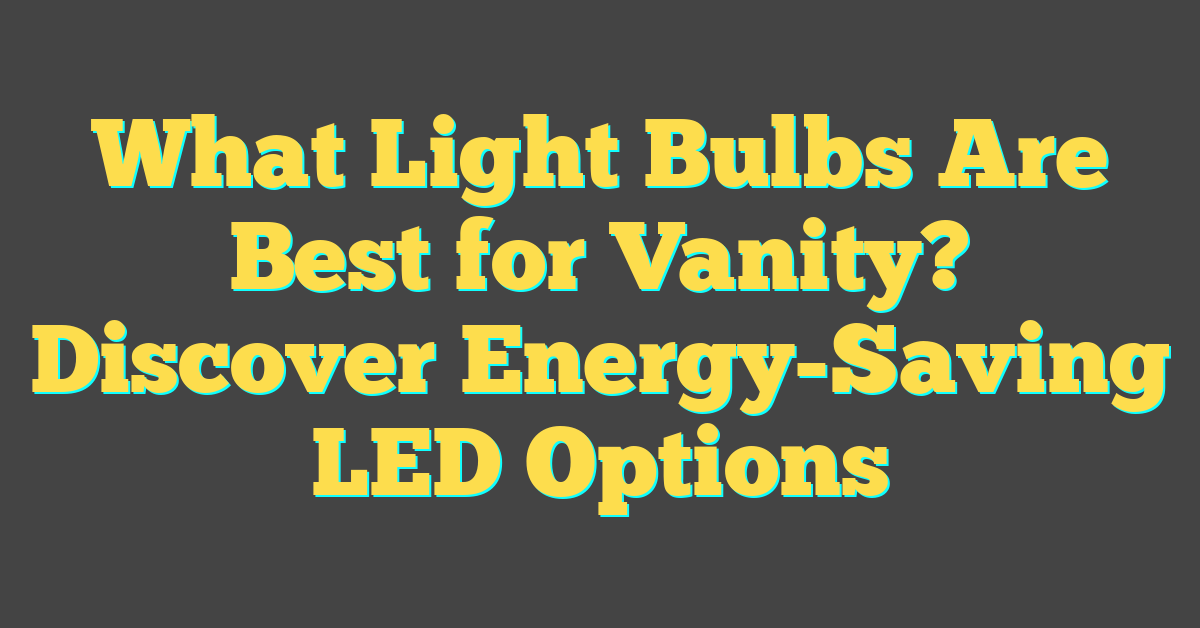When replacing a light bulb, have you ever considered the importance of the base type? The base is the part of the bulb that connects to the power source and ensures it fits securely into the light fixture. It’s more than just a twist-and-lock situation; the base impacts the bulb’s compatibility and functionality within your space.
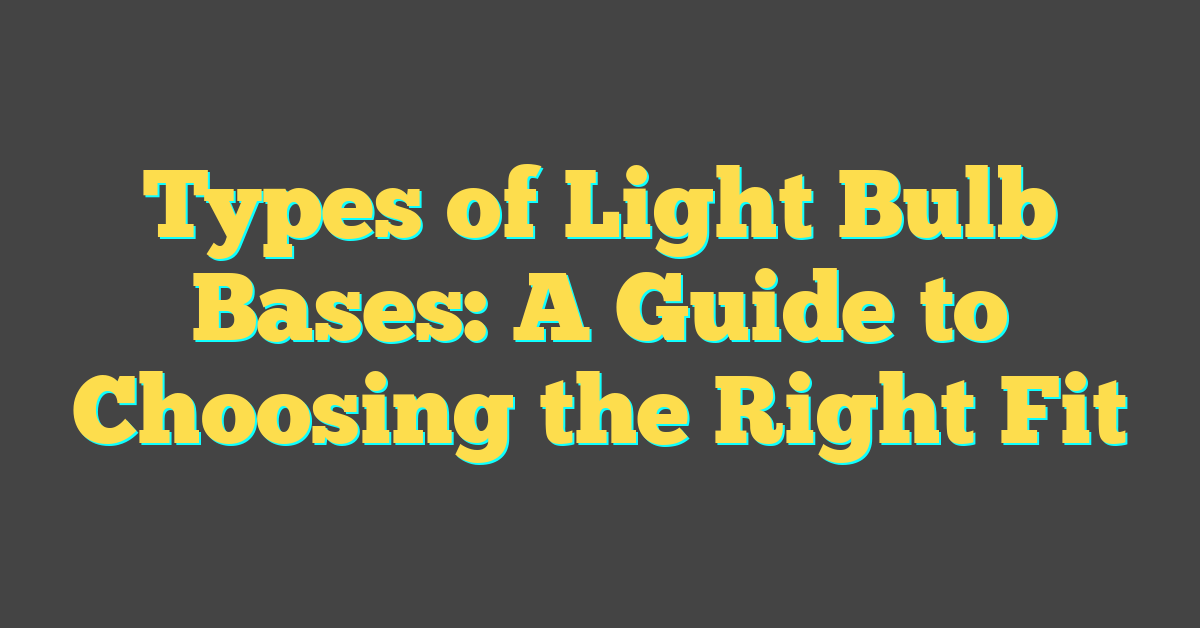

There is a variety of light bulb bases, each with its unique design, from screw and pin types to specialty models. Understanding the differences is key to ensuring you choose the right bulb for your fixture. Whether you’re fitting a modern LED lamp or a traditional incandescent bulb, knowing the base type is essential. The standardized codes like E26 or GU10 are not just random letters and numbers; they signify specific dimensions and specifications that can guide you in making the right pick.
Key Takeaways
- The base of a light bulb is crucial for compatibility and operation within a fixture.
- A range of light bulb bases exists, including screw and pin types, each designed for particular applications.
- Recognizing standardized base codes aids in selecting the correct light bulb base for any given fixture.
Understanding Light Bulb Bases
https://www.youtube.com/watch?v=vOAU8iAYmhQ&embed=true
When selecting a light bulb, understanding the base is just as crucial as picking the bulb type. Think of the base as the connector between your light fixture and the bulb itself. Here’s a straightforward guide to help you navigate through various light bulb base sizes and types.
E26 and E27: Often referred to as Edison screw base, these are perhaps the most common bases you’ll encounter. Both have a similar screw-in structure, with E26 being the standard size in North America, measuring 26 millimeters in diameter, and E27 being more common internationally.
E12: Known as the candelabra base, it’s significantly smaller in diameter. This base is typically used for decorative and smaller lamps. If you come across the term “C7” bulbs, these are the tiny nightlight bulbs with the E12 base.
E17: Sitting between the E12 and E26/27, the E17 intermediate base is often found in appliance bulbs and sometimes in decorative lighting as well.
E39 or Mogul Base: This is a larger base, often used in commercial or industrial settings.
GU10: These bases have a twist-and-lock mechanism, different from the screw-on types mentioned earlier. They’re often seen in track lighting and spotlights.
Bi-Pin Base: Commonly used in halogen and CFL bulbs, the size and spacing of the pins can vary, such as G4 or G9. It’s essential to match the base exactly to ensure proper fit and function.
Diameter of the Base: It’s measured in millimeters, directly across the base. Ensuring you match the diameter when replacing a bulb guarantees a compatible fit.
Here’s a quick format to visualize the main types:
- Screw Bases: E26/E27 (Standard), E12 (Candelabra), E17 (Intermediate), E39 (Mogul)
- Lock Bases: GU10
- Pin Bases: G4, G9 (Bi-Pin)
Whether you’re buying LED, incandescent, or halogen bulbs, knowing these bases will prevent you from getting the wrong fit and save you from a hassle during installation. Always measure or take note of the base you need before making a purchase, and if you’re unsure, most packaging will indicate the base type.
Common Screw Bases
https://www.youtube.com/watch?v=2mprlgVseg4&embed=true
« Light Bulbs for Chandeliers: Brightening Your Home with Style
Light Bulbs with Two Prongs: A Guide to Choosing the Right Fit »
When you’re choosing a light bulb for your lamp or fixture, the screw base is a key consideration. These bases are characterized by their coiled ridges that twist and lock the bulb into place.
Medium E26/E27
The Medium E26 base, also known as the Standard Edison E26 base in North America, is widely used in your everyday lamps and lighting fixtures. Its European counterpart, the E27 base, is similar in size, commonly 26 to 27 millimeters in diameter, and the two are generally interchangeable, making them versatile for a range of lighting needs.
- E26 – North American standard; 26mm diameter
- E27 – European standard; generally interchangeable with E26
Candelabra E12
For smaller lamps and decorative lighting, the Candelabra E12 base is your go-to. This base, with its 12-millimeter diameter, brings a touch of elegance and is often found in chandeliers and night lights.
- E12 – Typically 12mm diameter; associated with decorative and accent lighting
Mogul E39
The Mogul E39 base is significantly larger and primarily used for high-wattage light bulbs suitable in commercial and industrial settings. With a diameter of 39 millimeters, this base supports bulbs that illuminate large areas.
- E39 – 39mm in diameter; designed for high-wattage, industrial applications
Intermediate E17
Lastly, the Intermediate E17 base, which measures 17 millimeters across, bridges the gap between the standard medium base and the smaller candelabra base. It’s often used for appliances, as well as some table and ceiling lamps.
- E17 – 17mm diameter; serves various lighting purposes, from appliances to specific lamps
Each screw base is designed for a purpose, from brightening your living room with a Medium E26 bulb to adding that special flair with a Candelabra E12 bulb, or lighting up vast spaces with a Mogul E39. The Intermediate E17 may be encountered less frequently, but it still plays a crucial role in the lighting world. Remember, these screw bases make changing bulbs an easy twist away.
Pin Bases and Specialty Types
https://www.youtube.com/watch?v=k9e37nJ3EBE&embed=true
When exploring light bulb bases, you’ll come across a variety of pin bases and specialty types that are perfect for certain lighting scenarios, like track lighting or spotlighting.
Bi-Pin
Bi-pin bases are widely used for fluorescent bases as well as some types of halogen and LED bulbs. You’ll recognize them by their two pins, which insert into matching sockets. More often, these are seen in recessed fixtures and office lighting. For example, the G4 base is commonly found in smaller, low-voltage lighting applications.
GU Bases
GU bases, such as GU10 and GU24, feature a twist-and-lock mechanism, making the installation of bulbs quick and secure. The GU24 base stands out as it has two pins that lock into place with a quarter turn. You’ll often come across these bases in modern recessed fixtures and some types of track lighting.
G9 and G4
Both G9 and G4 bases belong to the bi-pin family but are distinct because of their pin size and applications. G9 bases, with their looped pins, are generally used for decorative and spotlight bulbs, often in residential settings. The smaller G4 base is typically found in compact lights such as under-cabinet lighting and desk lamps.
Standardized Codes and Compatibility
https://www.youtube.com/watch?v=EVOwTXHNX7E&embed=true
When selecting light bulbs for your home, understanding the standardized codes is key to ensuring compatibility with your fixtures, whether they be for ceiling fans, appliances, or chandeliers. These codes, which represent the socket sizes, help you find the perfect fit for your lighting needs.
E Type Bases
These are screw bases, with ‘E’ standing for Edison. The number following ‘E’ indicates the diameter in millimeters. Common sizes you might encounter include E26 and E27, synonymous with the standard size in North America and Europe, respectively. These bases are versatile and fit in a variety of household fixtures.
Bayonet Bases
You might also come across single contact bayonet bases often denoted by ‘BA,’ followed by a number indicating the base size. These require a push and twist action to lock the bulb into place, hence the term twist-lock.
Specialty Bases
For more unique or specialty fixtures, such as certain types of chandeliers or vintage lamps, you’ll want to look for specialty bases like GU10 or G4. These have a two-pin setup that inserts into the fixture’s socket.
It’s your responsibility to ensure that the light bulb type matches the socket in your fixture. For example, you wouldn’t want to force a bayonet base light bulb into an E type socket; it should fit snugly and easily if it’s the right match. Remember to always check the compatibility of the light bulb base with your existing fixtures to avoid any mishaps.
Size and Shape Variations
https://www.youtube.com/watch?v=w_kADPXkVsc&embed=true
When choosing the right light bulb for your needs, it’s essential to understand the differences in size and shape variations, as these factors determine compatibility with your light fixtures.
Bulb Shape Designations
The shape of light bulbs is denoted by letters and numbers; for example, “A19” describes a typical household bulb shape and its diameter. Here’s what you need to know:
- A-Series: The “A” in A15, A19, and A21 refers to the bulb’s shape (Arbitrary) and the number indicates the diameter in eighths of an inch. So an A19 has a diameter of 19 eighths of an inch, or approximately 2.375 inches.
- B-Series: The B10 bulb has a blunt tip, resembling a chandelier style, also measured in eighths of an inch.
- C-Series: Decorative candelabra bulbs like C7 and C9 provide a softer light and are often used in nightlights or holiday decorations.
- T-Series: Tubular bulbs such as T8, T10, and T5 are typically used in overhead lighting, with the number indicating the diameter.
- G-Series: Globe-shaped bulbs, including G11, G14, G25, and G30, offer a wider range of diameters, suitable for various applications where an aesthetic touch is desired.
Base Dimensions
Light bulb bases secure the bulb to the fixture and provide electrical contact. Precise sizes are crucial:
- General Light Bulb Bases: The medium base is commonly used in households (i.e., E26/E27), while smaller bases like those on B10 and CA10 bulbs fit in decorative fixtures.
- Light Bulb Base Chart: For an easy reference to base types, a light bulb base chart visually guides you through various designs, including pin bases for halogen and fluorescent bulbs or twist-and-lock types like the often-seen GU10.
Selecting the correct base is a simple but vital step in ensuring your light bulb fits and functions properly.
Technical Aspects of Bulb Bases
https://www.youtube.com/watch?v=y8nQjqnOfRQ&embed=true
When selecting a light bulb, understanding the technical aspects of bulb bases is crucial. You’ll want to pay attention to how voltage, wattage, and the construction material affect the bulb’s compatibility and performance.
Voltage and Wattage
Voltage is the measure of electrical potential your bulb can handle, and it’s essential that your bulb’s voltage matches that of your light fixture for safe operation. In the United States, most household bulbs are designed for a 120-volt supply, while in many other countries, the standard is 220 or 240 volts.
Wattage indicates energy consumption. It represents how much power your bulb will use. For example, energy-efficient bulbs like LEDs typically have a lower wattage while producing the same amount of light as higher wattage incandescent bulbs, making them more energy-efficient. Here’s a simple breakdown:
- Incandescent Bulb: 60 watts
- Comparable LED: 10 watts
Material and Construction
The materials used in bulb base construction can vary, from brass to aluminum to ceramic, each impacting durability and conductivity. Brass bases, for instance, are known for better corrosion resistance.
Your bulb’s base is characterized by specific standards, which ensure compatibility with your light fixture. The size and shape are defined by a code – such as E26/E27 for medium-sized Edison screw bases, with the numbers indicating the diameter in millimeters.
For construction, certain terms specify the design of the base:
- Screw Base: A threaded metal base, commonly used in household bulbs.
- Pin Base: Often found in fluorescent bulbs, it uses two pins to connect to the fixture.
Remember to check the technical specifications of the bulb to ensure it’s suited for your fixture. This includes making sure that you are matching LED bases with fixtures designed to support them, especially for energy-efficient bulbs that may have different power requirements.
Selecting the Right Base for Your Fixture
https://www.youtube.com/watch?v=nkNu1TSxhzs&embed=true
When choosing a light bulb for your fixtures, it’s essential to match the bulb base to the socket in your lamp or fixture. This ensures compatibility and safe operation. There are many types of bulb bases, but the most common is the screw base. Understanding the standardized code will help you in picking the right one.
The Edison screw base, typically seen as “E” followed by a number, is a widely accepted standard. For instance, a standard household bulb in the US is an E26, which denotes an Edison screw base with a diameter of 26 millimeters. If your fixture is smaller, like a chandelier, you might need a candelabra bulb base, known as E12, which is a narrower 12 millimeters in diameter.
- E26 – Standard bulbs for most household fixtures.
- E12 – Smaller bulbs, typically for decorative or specialty fixtures.
Before heading out to buy a new bulb, check the base of the existing one, or look inside the socket for indications of the required base type; there should be a visible code. Without the right base, even if the bulb fits, it might not sit properly, leading to risks like electrical shorts.
Your lamp base can be a bit trickier if you have a specialty fixture. Fluorescent tube bases, for instance, have a different pin-based system. They are often denoted by a ‘T’ followed by the diameter of the bulb in eighths of an inch.
When selecting a bulb, the key is ensuring the base matches your fixture’s socket. If you’re unsure, take the old bulb with you or check a light bulb base chart to confirm you’re getting the right type. Your safety and satisfaction with your lighting depend on it.
Light Bulb Base Types for Specific Applications
https://www.youtube.com/watch?v=9aFa_3Lud2A&embed=true
When you’re selecting the right light bulb for your needs, understanding the specific base types designed for different applications is crucial. These bases not only ensure that the bulb fits securely but also that it functions properly in its intended environment.
Appliance Bulbs
Appliance bulbs typically use standard-medium bases (E26/E27), ensuring they fit most common household fixtures. For example, fridge and oven bulbs are designed to withstand extreme temperatures. On the other hand, specialty halogen base types are often used for high-performance appliances, such as spotlights in your microwave.
Outdoor Lighting
For your outdoor lighting needs, par38 and br40 bases are designed for flood and security lights. They are robust and can endure harsh weather conditions. If you have a garden or pathway lighting, par20 or par30 bases could be your go-to option for a focused beam of light, often used in spotlights.
Decorative Uses
Decorative applications, like chandeliers, commonly employ candelabra E12 bases due to their smaller and more elegant design. For mood lighting or accent pieces, BR30 bulbs provide a soft, diffused light that’s perfect for creating ambiance. Meanwhile, PAR16 bulbs might be used for small decorative spotlights to draw attention to artwork or architectural features.
By matching the base type to the application, you ensure optimal functionality and longevity for your lighting setup.
Conversion and Adaptation Solutions
https://www.youtube.com/watch?v=mmR5iEEP9q8&embed=true
When you’re looking to fit a light bulb into a fixture with a different socket size, adapters and conversion kits can be your best allies. You have various options, whether you’re dealing with LED bulbs, incandescent bulbs, or other types.
Adapters: These handy devices allow you to change the base of your bulb to fit into a different socket. For instance, you can use an E26 to E39 adapter to fit a medium-sized base bulb (“E26”) into a larger mogul base socket (“E39”). This is particularly useful if you have a fixture that requires a bulb with an Edison screw base but only have bulbs of a different base type available.
Conversion Kits: These kits generally come with everything you need to alter the fixture itself to accept a different type of bulb. For instance, if your lighting requires LED bulbs and you have incandescent bulbs, a conversion kit could rewire the fixture to accommodate the technology change, improving energy efficiency.
Here’s a quick reference guide:
| Original Socket Size | Adapter | New Bulb Type |
|---|---|---|
| E26 (Medium) | E26 to E39 | Mogul E39 |
| E39 (Mogul) | E39 to E26 | Medium E26 |
The flexibility of socket adapters makes them a cost-effective and straightforward solution for mismatched bulbs and fixtures. Remember, safety is paramount. Ensure that the electrical specifications (such as voltage and wattage) match up between your light fixture and the bulb you’re using with the adapter or conversion kit. When in doubt, consulting with an electrician can help you make the best choice for your lighting needs.
Environmental Considerations and Energy Efficiency
https://www.youtube.com/watch?v=RsDgjKj014U&embed=true
When you’re looking at light bulb bases, you might wonder how they tie into energy efficiency and environmental impact. Here’s a friendly guide to what you should know.
LED Bulbs: LEDs are at the forefront of energy-efficient lighting. They use up to 90% less energy than traditional incandescent bulbs and last significantly longer. Switching to LED lamps can reduce your carbon footprint and help combat climate change.
Halogen Bulbs: Although they are more efficient than incandescent bulbs, halogen lights still lag behind LEDs and CFLs. They generate quite a bit of heat, which isn’t ideal for reducing your energy consumption.
CFLs: Compact fluorescent lamps (CFLs) were once the gold standard for energy savings. While they use less energy than incandescent and halogen bulbs, CFLs contain mercury, which requires careful disposal to avoid environmental harm.
Choosing Energy-Efficient Bulbs:
- Look for the ENERGY STAR® label when shopping for bulbs.
- Compare lumens (brightness) and watts (energy used) to find the most efficient option for your needs.
Remember, your choice influences not only the colors and shapes of light in your home but also the environment and your energy bills.
- Incandescent Bulbs: These are the least efficient options and have been largely phased out in favor of more efficient technology.
- Colors: Color temperature measured in Kelvin (K) doesn’t impact energy efficiency but can affect the mood of a space.
- Shapes: The shape of a bulb doesn’t directly affect energy efficiency but make sure the shape suits the fitting and usage.
By choosing more energy-efficient bulbs, you’re not just saving on your energy bill, you’re also doing your part for the planet!
Visual Guides and Reference Charts

When you’re searching for the right light bulb, understanding the variety of base types and sizes is crucial. A visual light bulb base chart can be an invaluable tool, laying out both base sizes and shapes in an easily digestible format. Below is a simplified guide that will help you navigate through the common bases:
E26/E27: These are the standard base sizes for most light bulbs in North America and Europe, respectively. They’re often seen in A19 bulbs, the typical shape you’d imagine a light bulb to have.
E12: Also known as the candelabra base, it’s noticeably smaller than the E26/E27 and is frequently used in decorative lighting fixtures.
E39: This is the mogul base. Larger than standard bases, it’s usually found in high-wattage bulbs and industrial settings.
GU10: This base features a bi-pin twist-and-lock mechanism which is generally found in recessed or track lighting.
When you’re comparing North American and European base sizes, you’ll mostly note that the numbers are quite similar but are denoted differently—E26 is common in North America, whereas E27 is the standard across Europe.
To help you match the base to your fixture, take a look at the comprehensive charts provided by Bulbs.com. Their detailed illustrations showcase not only the bases mentioned here but many specialty bases as well. And for understanding the nuances between different shapes and temperature scales, the Bulb Reference Guide is a friendly, user-oriented tool bridging knowledge and practical application.

